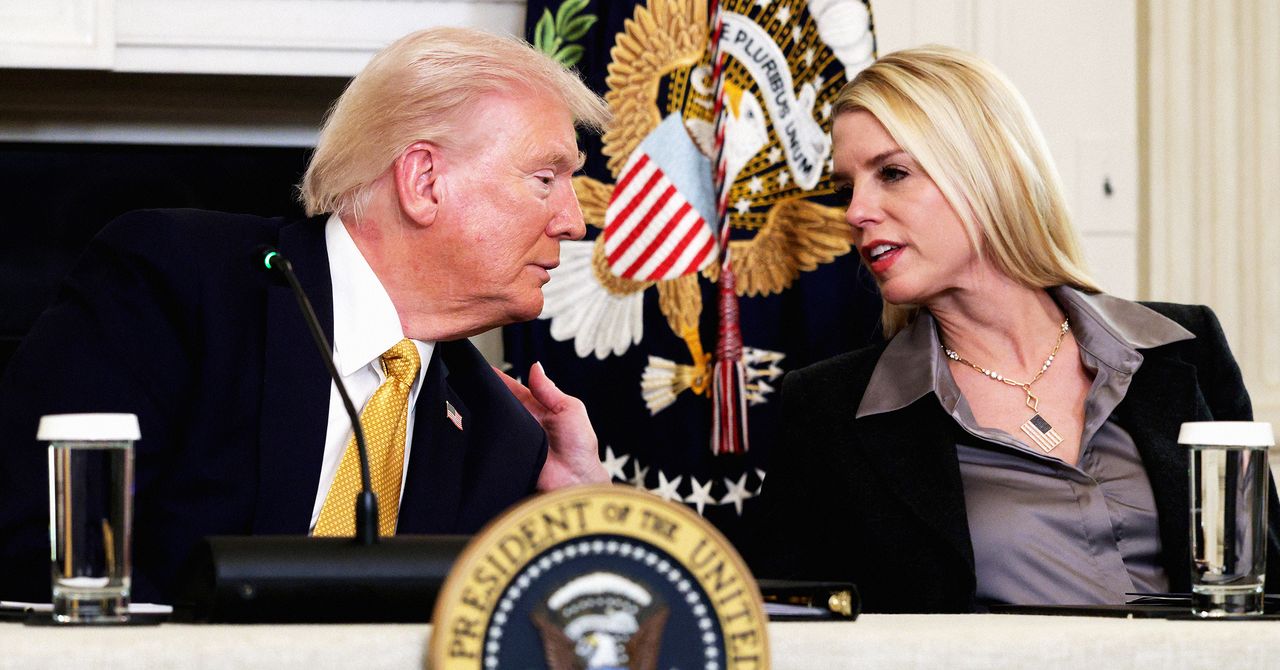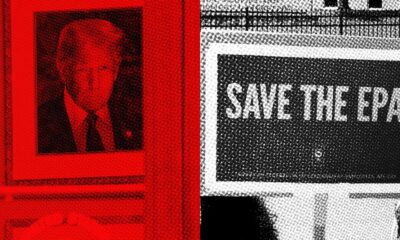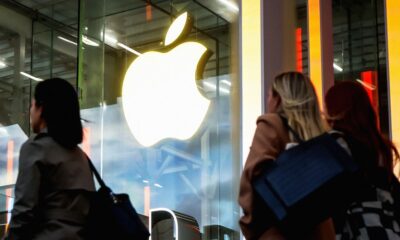Tech
China Is Leading the World in the Clean Energy Transition. Here’s What That Looks Like

Speaking by video at the UN Climate Summit in New York last week, China’s president Xi Jinping laid out his country’s climate ambitions. While the stated goals may not have been aggressive as some environmentalists would like, Xi at least reaffirmed China’s green commitment.
“Despite some countries going against the trend, the international community should stay on the right track, maintain unwavering confidence, unwavering action, and undiminished efforts,” he said. Any reference to Donald Trump and the United States was surely intended (though not explicit).
The march of the energy transition is a long one, but it has to start somewhere. And with this approach, China has already taken quite a few steps.
Beijing Stands (Mostly) Alone
Today, there is no race to be a climate leader. The world is a far fry from the COP26 conference in November 2021, when tackling the threat of climate change seemed like a global priority. A few months later, Russia invaded Ukraine; the ensuing energy crisis and inflation kicked climate off of many political agendas.
While Joe Biden and the United States responded to soaring prices with the Inflation Reduction Act, which prioritized investment in renewable energy, Donald Trump subsequently withdrew the US from the Paris Agreement—an international accord to limit global warming—for the second time. The European Union has also stuttered: Too internally divided, it did not go beyond a drab declaration of intent at the UN Climate Summit. There hasn’t been much movement from India, a country of nearly 1.5 billion people. And other nations’ emissions are simply too small to matter.
Given this background, it becomes easy to understand how, in this scenario, China has become a global leader in the clean energy transition. Xi’s speech did not go into much detail, but it did mention all the main points of China’s strategy.
Cut Emissions Between 7 Percent and 10 Percent by 2035
In New York, Xi acknowledged the importance of the transition, and for the first time, agreed to reduce greenhouse gas emissions rather than simply promise to slow them down. China’s stated goal is between 7 percent and 10 percent reduction by 2035.
How do you evaluate these pledges? While the commitment is vague, it’s still significant; previously the regime had merely promised to reach peak emissions by 2030, tying the cuts to economic growth. In Xi’s speech you can seen China transition from a developing country approach to a role more akin to that of industrialized countries, whose emissions have been declining for decades.
Slow Going?
It should be pointed out that reducing emissions at the pace promised by Beijing means a decline of about 1 percent a year. According to an analysis by William Lamb of the Potsdam Institute for Climate Impact Research, this is a slower pace than that held by most industrialized nations. Italy, for example, has reduced them by an average of 3.2 percent every 12 months since their peak in 2006; the United Kingdom by an average of 2.8 percent since 2004; France by 2.3 percent.
“China has often promised little and achieved much,” notes Andreas Sieber, associate director for policy and campaigns for the global climate nonprofit 350.org, suggesting that China might overdeliver. The country’s lack of democracy also means its policies are not at risk of reversal every election cycle.
On Renewables
Xi Jinping’s speech included a commitment to reach 3,600 gigawatts (GW) of installed wind and solar capacity by 2035, six times the country’s 2020 figures. This is already the leading country in terms of installed renewable power, and a giant on the technology front as well, with universities churning out environmental and climate tech research at full speed, and attracting scientists from abroad across numerous fields. He also announced a commitment to an energy mix with more than 30 percent renewables.
On Electric Vehicles
Mobility has long been an issue for China, which has moved from bicycles, ubiquitous until the 1990s, to the mass automobile. The images of the 2008 Beijing Olympics are unforgettable: A blanket of smog buried the city. The government has in recent years given a strong boost to electric mobility: At the Climate Summit it announced plans to make EVs “mainstream,” that is, prevalent in sales. It helps that it has ready access to rare earth minerals that are essential for building batteries. And for that matter, the country hosts giant automotive companies like BYD and Catl, which supplies batteries to some 50 global brands including Tesla and Volkswagen.
On the carbon market
Xi has declared his intention to expand the national carbon emission trading market to more emission-intensive sectors than today.
On forests
China made additional commitments on forests, which it says will reach an extent of 34 billion cubic meters.
China has reshaped the market for green technologies.
To skeptics expecting broader measures and the mantle of true global leadership from China, well, that’s not a particularly coveted title these days—especially if the US continues to reverse course on climate science. As senior advisor Bernice Lee of the think tank Chatham House notes, China invested $625 billion in the clean energy transition last year alone; that’s nearly a third of the gobal total.
Not only that: Research and massive adoption of renewable technologies have led to the dramatic drop in prices, and China’s very large domestic market is a formidable driver in this regard. “The rise of Chinese renewables is reshaping the global economy and replacing coal in the domestic market,” Lee says.
The hope is that other countries, reassured by that commitment, will follow China’s example rather than America’s.
Tech
Trump Takes Aim at State AI Laws in Draft Executive Order

US President Donald Trump is considering signing an executive order that would seek to challenge state efforts to regulate artificial intelligence through lawsuits and the withholding federal funding, WIRED has learned.
A draft of the order viewed by WIRED directs US Attorney General Pam Bondi to create an “AI Litigation Task Force,” whose purpose is to sue states in court for passing AI regulations that allegedly violate federal laws governing things like free speech and interstate commerce.
Trump could sign the order, which is currently titled “Eliminating State Law Obstruction of National AI Policy,” as early as this week, according to four sources familiar with the matter. A White House spokesperson told WIRED that “discussion about potential executive orders is speculation.”
The order says that the AI Litigation Task Force will work with several White House technology advisors, including the Special Advisor for AI and Crypto David Sacks, to determine which states are violating federal laws detailed in the order. It points to state regulations that “require AI models to alter their truthful outputs” or compel AI developers to “report information in a manner that would violate the First Amendment or any other provision of the Constitution,” according to the draft.
The order specifically cites recently enacted AI safety laws in California and Colorado that require AI developers to publish transparency reports about how they train models, among other provisions. Big Tech trade groups, including Chamber of Progress—which is backed by Andreessen Horowitz, Google, and OpenAI—have vigorously lobbied against these efforts, which they describe as a “patchwork” approach to AI regulation that hampers innovation. These groups are lobbying instead for a light touch set of federal laws to guide AI progress.
“If the President wants to win the AI race, the American people need to know that AI is safe and trustworthy,” says Cody Venzke, senior policy counsel at the American Civil Liberties Union. “This draft only undermines that trust.”
The order comes as Silicon Valley has been upping the pressure on proponents of state AI regulations. For example, a super PAC funded by Andreessen Horowitz, OpenAI cofounder Greg Brockman, and Palantir cofounder Joe Lonsdale recently announced a campaign against New York Assembly member Alex Bores, the author of a state AI safety bill.
House Republicans have also renewed their effort to pass a blanket moratorium on states introducing laws regulating AI after an earlier version of the measure failed.
Tech
Nvidia CEO Dismisses Concerns of an AI Bubble. Investors Remain Skeptical

Nvidia CEO Jensen Huang didn’t need any prompting on Wednesday to address the elephant in the room. “There’s been a lot of talk about an AI bubble,” he said on an earnings call before quickly getting to his main point: “From our vantage point, we see something very different.”
Huang went on to spend about five minutes trying to explain how the chipmaker, which has soared to become the world’s most valuable publicly traded company over the past three years, would be able to sustain unprecedented customer demand. His thesis is that AI is taking over the world, and Nvidia chips will be sorely needed to power that technological revolution underway. “All industries, across every phase of AI, across all of the diverse computing needs in a cloud, and also from cloud to enterprise to robots,” will need Nvidia’s products, Huang said.
The CEO’s pep talk ultimately drew mixed reactions from Wall Street. Nvidia shares have fallen about 10 percent in recent weeks after hitting an all-time high in late October. Shares budged up about 5 percent in after hours trading on Wednesday after Nvidia reported record quarterly sales and Huang made his anti-bubble comments. But the increase was not enough to fully make up for the recent selloff.
Nvidia has enjoyed three years of booming success since OpenAI debuted ChatGPT and caused a massive surge in demand for the company’s GPUs, which are used to train and operate generative AI systems. Nvidia dominates the global market for GPUs, and its latest releases have become highly sought after with demand far exceeding supply. On Wednesday, Nvidia executives reiterated that it has about $500 billion in unfilled orders.
The company has used its newfound wealth to buy back its own shares and invest billions of dollars in AI companies, including top users and customers of its chips such as ChatGPT developer OpenAI, data center operator CoreWeave, and Elon Musk’s xAI, which develops the chatbot Grok.
Nvidia’s deals have fueled concerns among some investors that the company is unsustainably propping up sales. AI industry executives contend that partnering closely with Nvidia is crucial for getting access to chips and technical support, and that their revenues will eventually increase enough to fund their GPU purchases.
On Wednesday’s call, Huang addressed a financial analyst’s question about the rationale for investing in companies such as OpenAI. “The partnership that we have with them is one so that we could work even deeper from a technical perspective, so that we could support their accelerated growth,” Huang said. “I fully expect that investment to translate to extraordinary returns.”
Tech
NASA Finally Weighs In on the Origin of 3I/ATLAS

After the temporary shutdown of the US government, NASA has finally started its nonessential work back up. It’s starting off with a bang: The agency called a press conference to show its hitherto reserved images of the interstellar object 3I/ATLAS. NASA scientists also confirmed that 3I/ATLAS is in fact a comet, contrary to the speculations about alien technology flooding the internet.
During the broadcast, a panel of scientists showed the results of observations obtained by different NASA missions across various points in the journey 3I/ATLAS has taken. Each provided insights in the infrared, visible, ultraviolet, and gamma-ray spectrums, providing a better understanding of the true nature of 3I/ATLAS.
Among the most relevant data are images captured by the Mars Reconnaissance Orbiter and MAVEN satellites, as well as those from the Psyche and Lucy space probes, and even from the SOHO solar probe. The scientists clarified that all the data will be publicly available for anyone to investigate.
3I/ATLAS Images Shared by NASA
SOHO: Image From the Sun-Monitoring Probe
This orange-toned photo comes from NASA. The SOHO probe that monitors the sun managed to capture 3I/ATLAS between October 15 and 26. In the words of the agency, this image was a surprise. They did not expect that the object could be seen from so far away, 358 million km.
MRO: One of the Best Close-Ups of 3I/ATLAS
One of the most anticipated photos of the comet is the one obtained by the Mars Reconnaissance Orbiter satellite in October, when 3I/ATLAS approached at “only” 29 million km. NASA finally shared it. The image shows the frozen body surrounded by a cloud of characteristic dust ejected as the comet approached the sun.
STEREO: The Photo Confirming the Shape of 3I/ATLAS
The STEREO observatory analyzes the behavior of the sun. To get at least one coherent image of the comet, scientists had to stack several images taken at different exposures. In the end, the interstellar object was revealed as a bright orb against a noisy background.
MAVEN: A Glimpse of Comet Hydrogen
MAVEN is a Mars orbiter. Its lens captured this ultraviolet spectrum image of 3I/ATLAS before it reached its closest approach to the red planet. It shows hydrogen emitted from different sources. The portion on the left belongs to the comet’s signature.
PUNCH: Another Solar Glimpse
PUNCH is a polarimeter that monitors the sun’s corona and its heliosphere. However, its lenses made it possible to visualize the comet’s tail for weeks from October to September. In this animation, each frame represents a daily snapshot, while the streaks in the background are produced by the movement of the stars.
On December 19, 2025, the comet will reach its closest point to Earth. It will pass at a completely safe distance: about 267 million km away. To put that in perspective, it’s equivalent to almost 700 times the distance between the Earth and the moon, and 1.8 times the separation between our planet and the sun. This flyby will have no effect on the Earth.
Both NASA and other space agencies are expected to initiate additional observing campaigns to capture better photographs and relevant information about the third confirmed interstellar object in history.
This story originally appeared in WIRED en Español and has been translated from Spanish.
-

 Tech5 days ago
Tech5 days agoNew carbon capture method uses water and pressure to remove CO₂ from emissions at half current costs
-

 Politics6 days ago
Politics6 days agoBritish-Pakistani honoured for transforming UK halal meat industry
-

 Business5 days ago
Business5 days agoThese 9 Common Money Mistakes Are Eating Your Income
-

 Business5 days ago
Business5 days agoWhat’s behind Rachel Reeves’s hokey cokey on income tax rises?
-

 Sports4 days ago
Sports4 days agoTexas A&M officer scolds South Carolina wide receiver after touchdown; department speaks out
-

 Sports5 days ago
Sports5 days agoApple scrapping MLS Season Pass service in ’26
-

 Tech6 days ago
Tech6 days ago$25 Off Exclusive Blue Apron Coupon for November 2025
-

 Fashion7 days ago
Fashion7 days agoAdidas & Patrick Mahomes expand NIL programme with Texas Tech athletes















%25202.23.16%25E2%2580%25AFp.m..png)





